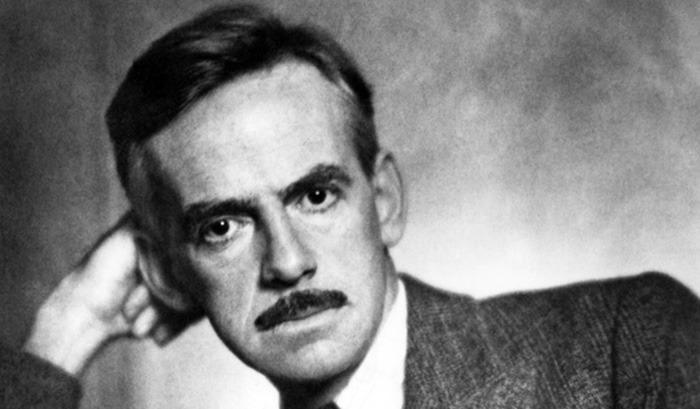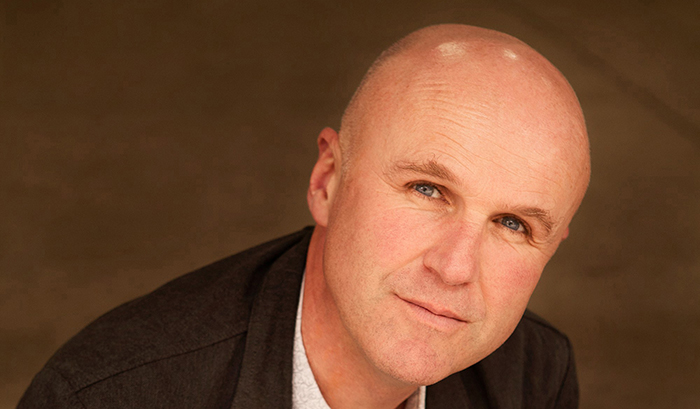Re “Interview with an Artist. Who Is Yuyanapaq?”
Question — The relationship between music and images is well established. Arguably, the cinema's impact wouldn't be the same without a brawny musical score providing companionship to the imagery. What led you to creating multi-media albums? What is your method for joining music and film together?
[img]1286|left|‘Ballerina’s Hammer,’ from the film ‘Yahuarniy’||no_popup[/img]
‘Ballerina’s Hammer,’ from the film ‘Yahuarniy’
I was led to the four-part Ccollanan Pachacamac series by an experiment. Three years ago, on Oct. 31, 2008, I wrote the script for it almost as an automatic writing, with a “plant guide,” in one sitting. I had acquired a used Bolex camera, a 1970 model, earlier that year. With no formal instruction in either filming or film editing, I shot and assembled the first film “Ccollanan Pachacamac,” which largely takes place in Death Valley, CA. The interesting part about filming for me in working sans manual was that accidents and wrong turns in what we did to the film image became, by the third film, complex, interconnected “effect webs.” Even if I wanted to, I never could reproduce them. Using a super-8 camera (although more costly to develop and telecine compared to using the ubiquitous digital camera) gives a look to the affected film image which, when combined with mirrors, vaseline on the lens to create ghostly edges and more intensive editing maneuvers , began to create worlds that spoke to my unconscious as a primal image.
The music was written concurrently with the filming. Each seemed to affect the other reciprocally
I noticed on your website an image of an acrylic piece under the title “Around Me Everything Is Beautiful.” You do more than compose music and make films. Can you discuss other aspects of your artistic work that we might only be obliquely aware of?
My perspective on my own art is oftentimes as an outsider. I honestly believe the interpretation of the viewer or audience is as valid as my own interpretation of my paintings and films. The true author or creator of the work is the sacred plant; thus i can sometimes only conjecture as to the meaning.
Several times I’ve read a literary work I feel serves as a key in understanding some references and mythologies in the Ccollanan Pachacamac Tetralogy. This is the historical atlas of world mythology by Joseph Campbell. Other meanings within these films seem to be of the universal struggle to accept the realization that life lives on life, the eternal brevity of existence, and the magic of the mysterious that we often see only as the faint, wispy fingers of an amaranth sunrise in the lonely desert.
You create a space for your viewers/listeners to bring in their own interpretation through the non-narrative, even elliptical, nature of your work . Recognizing that perhaps you're trying to avoid assigning rigid meaning to your work, what is your perspective on your own art?
In August 2007 I had a transformative experience. I became an artist. I never had painted before, but I began to paint. Every full moon I began a new painting, using a plant guide. I continued this ritual until July 2009 when I embarked on a 22-panel painting series of Dante's Inferno. It still is still incomplete, and more sporadic in its creation. (Nineteen panels are completed, with the 20th under construction). The composing of the music for the first film also began in August 2007, although I didn’t know it at the time.
Every month I update the website with a new image of a painting and a poem. although in place of poetry, I have been posting installments of an automatic writing composed in February with the title “l'Etreinte de la Pieuvre,” or “the Grip of the Octopus.”
I hope to serve as the intermediary between the sacred plant and other art forms in the future, including architecture, sculpture and photography. There is a mesmerizing savageness to art undertaken with internal filters, the rational mind turned off and the spiritual self exposed to the vistas the plant uncovers. I have a true reverence to these plants. It is my hope more people use these guides, not recreationally to zone out of their lives, but rather to zone in to their true selves and the realities that lie dormant within. As André Breton so aptly put, “The eye exists in its savage state.”
Finally, what future projects are you looking forward to?
I plan to release Yahuarniy as a DVD next June 6, the day of the transit of Venus, although it falls on June 5 in some areas. The fourth and final film Hichascancuta will be released on Dec. 21, 2012. It is , dedicated in full to this day, as viewed by the ancient Olmec and Chavin astronomers as the marriage between the most sacred object in their day sky, the winter solstice sun, with the most sacred object in their night sky, the Black Road, or River, or Xibalba, a conjunction of our timekeeper sun with the black sun, or black hole, at the heart of Xibalba, where time ends. This day was so looked forward to by these creators of the Olmec/Mayan/Aztec calendar that it was the defining moment, the entire calendar was built around. This sacred conjunction occurs once every precessional cycle, every 26,000 years. I supply this information to counter the fallacious theories circulating regarding the significance of 2012, and this day in particular. It is not the end of the great ancient American calendar. It is the beginning
I plan to finish the Inferno series in June, which has been painted entirely using toothpicks on gessobord.
My most anticipated future project will be the building of “Ccollanan Pachacamac”, a planned earthship / observation deck using domes to create a self-sustaining structure in the Mojave Desert. Hopefully, it will be completed by 2022.
Many thanks for your time, Yuyanapaq.
To visit Yuyanapaq’s website, set your browser to www.yuyanapaq.com. Don’t forget to keep an eye out. Someday you may come across a CD on picnic table, a park bench, a bus stop, somewhere unexpected.
—
Assistant Editor: THE FRONT PAGE ONLINE
email: fsisa@thefrontpageonline.com
blog: www.inkandashes.net
…and also fashion with TFPO's The Fashionoclast at www.fashionoclast.com







